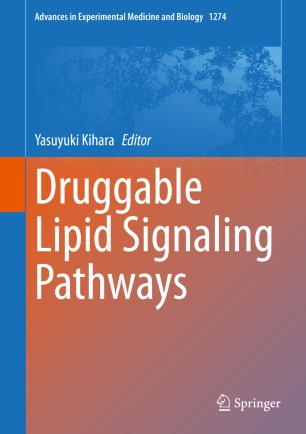

Most ebook files are in PDF format, so you can easily read them using various software such as Foxit Reader or directly on the Google Chrome browser.
Some ebook files are released by publishers in other formats such as .awz, .mobi, .epub, .fb2, etc. You may need to install specific software to read these formats on mobile/PC, such as Calibre.
Please read the tutorial at this link: https://ebookbell.com/faq
We offer FREE conversion to the popular formats you request; however, this may take some time. Therefore, right after payment, please email us, and we will try to provide the service as quickly as possible.
For some exceptional file formats or broken links (if any), please refrain from opening any disputes. Instead, email us first, and we will try to assist within a maximum of 6 hours.
EbookBell Team

4.8
64 reviewsLipids are responsible not just for constituting cellular membrane but also for storing energy, transducing signaling, and modifying proteins. Bioactive lipids, or lipid mediators, transduce signaling as intracellular messenger like phosphoinoitides, and also regulate cell-cell communication through G protein-coupled receptors (GPCRs) that are potentially valuable drug targets in many diseases. Until now, about 40 GPCRs within ~300 rhodopsin-like (class A) GPCRs, are identified as lipid GPCRs. Advances of lipid research have enabled to develop novel small molecules targeting lipid GPCRs for several diseases. Most notably, fingolimod (FTY720), a sphingosine 1-phosphate (S1P) receptor modulator, became the first FDA-approved medicine as an orally bioavailable drug for treating relapsing forms of multiple sclerosis (MS). In addition to fingolimod, other drugs targeting lipid GPCRs had been developed such as latanoprost (prostaglandin F2a analogue, used for ocular hypertension and glaucoma), epoprostenol and treprostinil (prostaglandin I2 analogue, used for pulmonary arterial hypertension), montelukast and pranlukast (cysteinyl leukotriene receptor antagonist, used for asthma and allergies), etc. Novel drugs are also expected like lysophosphatidic acid (LPA) receptor antagonist for treatment of pulmonary fibrosis.
Drug development targeting lipid signalling pathways are backdated to more than a century, when aspirin was synthesized and selling by Bayer, while the basic mechanism of aspirin's effects (block prostanoid synthesis by inhibiting cyclooxygenases) had not been discovered until 1970s. Nowadays, non-steroidal anti-inflammatory drugs (NSAIDs) like aspirin and ibuprophen are commonly used as antipyretic analgesics and available readily over-the-counter oral drugs. Both upstream and downstream enzymes, such as phospholipase A2s and prostaglandin E synthases, respectively, are also potential therapeutic targets for inflammatory diseases.
Recent studies of lipid metabolism expand the lipid biology field from pro-inflammatory lipid mediators to anti-inflammatory epoxy fatty acids (epoxyeicosatrienoic acids), and also omega-3 fatty acid-derived pro-resolving lipid mediators (lipoxin, resolvin, and neuroprotectin). These bioactive lipids, their metabolic pathways and receptors are of great interest in developing next-generation anti-inflammatory and pro-resolving drugs for a wide variety of diseases including.
This book summarizes not only historical overview of lipid signaling pathways but also provides summary of cutting-edge studies that may provide some hints of novel “druggable” lipid signaling targets.